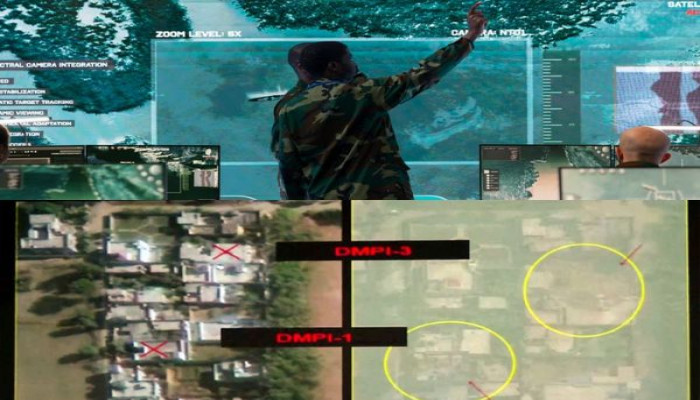Artificial Intelligence enabled 94 per cent accuracy in targeting Pak assets: Indian Army
- In Reports
- 08:36 PM, Oct 07, 2025
- Myind Staff
Historical data spanning 26 years, processed through artificial intelligence, gave the Army accurate insights into the Pakistan Army’s movements during Operation Sindoor and helped it achieve precise targeting.
Lt Gen Rajiv Sahni, who was Director General Information Systems during the operation, today said the accuracy of the system to locate and enable targeting was more than 94 per cent.
Explaining how it worked, he said live data was collected by integrating feeds from all sensors, drones, radars, and satellites onto a single screen for the commander to take action. “Everything is aggregated and that includes data about enemy positions, assets and logistics," said General Sahni, who is now Director General Electronics and Mechanical Engineers.
The battlefield modelling was done using 26 years of data that had tracked and stored each radio emission and every frequency signature. This included the movement of each piece of equipment and the Pakistan unit it had been assigned to in the past.
“With this modelling and live feed, 94 per cent accuracy was achieved, allowing us to pinpoint where a particular machine (gun, missile, unit, etc) would be located on the border," General Sahni added.
The system also allows other services, including the Navy and the Indian Air Force, to access the same data.
The Army even sourced weather information from the Indian Meteorological Department. A specialised in-house application provided forecasts up to 200 km into enemy territory, giving commanders usable data on wind speed and direction. This information was essential for calculating the trajectory of long-range missiles using AI.
Data-based targeting became possible because the home-grown application for “electronic intelligence collation” was modified in record time during Operation Sindoor. This created a common surveillance picture for target acquisition, enhancing resource coordination, improving decision-making, and giving commanders at all levels greater agility and situational awareness, General Sahni said.
AI is reshaping modern militaries worldwide, with armed forces rapidly adopting automation, digitisation, and new technologies.
The Army has declared 2024-2025 as the “Year of Technology Absorption.” This includes establishing dedicated AI cells, fostering collaboration among armed forces, research institutions, academia, and industry, and creating secure cloud-based and edge-computing environments for battlefield use.
A parallel programme focuses on developing “smart weapons” and AI-enabled autonomous systems such as drones and unmanned vehicles, while upgrading existing platforms with predictive maintenance and decision-support modules.
An Army AI Research and Incubation Centre opened in Bengaluru in December last year. The state-of-the-art facility, inaugurated by Army Chief General Upendra Dwivedi, accelerates AI project development through partnerships with DRDO, academia, and industry.
Additionally, the Army is building an indigenous unified “AI platform” to integrate operational, intelligence, logistics, and training applications within a single secure framework.







Comments